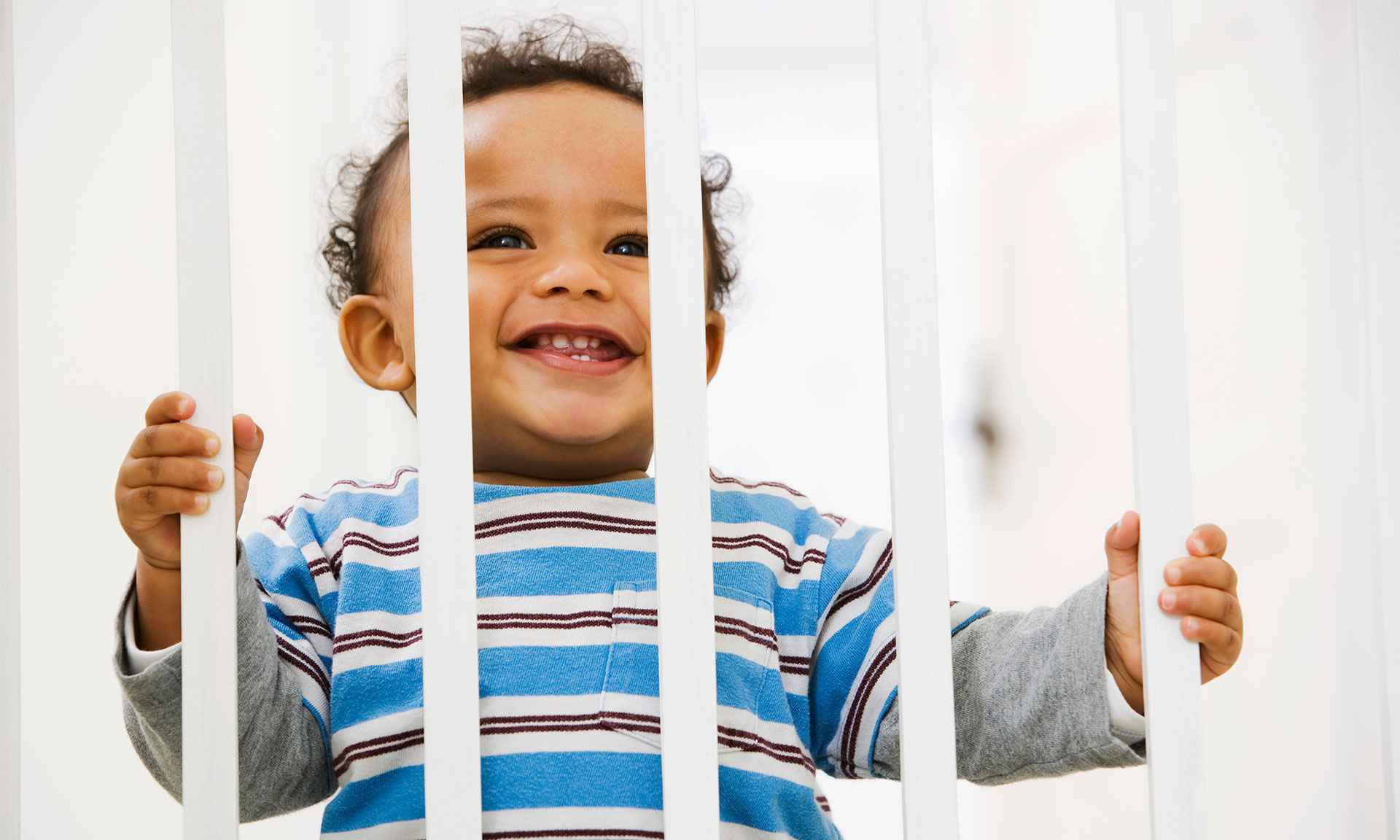First Time Home Buyer Essentials Taking the leap into homeownership is an exciting journey. Whether…
Childproof House
Creating a truly childproof-house can feel overwhelming. However, with the right baby proofing strategies, you can keep your child safe at every stage. This guide offers safety essentials to help you tackle potential hazards room by room, ensuring peace of mind for the whole family—whether you’re in Colorado Springs or elsewhere in Colorado. One crucial aspect is the necessity of using outlet covers to protect electrical outlets from curious toddlers, as these pose a significant risk for young children.
Thinking of moving to a new, family-friendly home? 719 Lending (NMLS #1601989) can help you explore your mortgage options.
1. Preparing for Childproofing
1.1 When to Childproof Your Home
Childproofing your home is an essential step in ensuring the safety and well-being of your young kids. Ideally, you’ll start childproofing before your baby is born, or as soon as possible after birth. Early preparation allows you to:
- Identify potential hazards in your living space.
- Implement baby proofing solutions before your child becomes mobile.
- Regularly update measures as your child grows, ensuring a continuously child-safe environment.
By proactively planning, you’ll have more time to create a secure space for your little explorer.
1.2 Basic Safety Tips for a Childproof Home
Creating a child-safe environment starts with a few foundational steps:
- Install safety gates at the top and bottom of stairs to prevent falls.
- Anchor furniture and heavy appliances to walls to prevent tipping.
- Install window guards to discourage climbing and falling.
- Use outlet covers to prevent electric shocks and curious fingers in dangerous spots.
- Install cabinet locks to keep dangerous items like cosmetics, cleaning products, and medicines out of reach from young children.
- Keep sharp objects (knives, scissors) out of reach.
- Add corner guards to cover sharp edges on furniture or appliances.
- Use a living room babyproofing checklist to ensure you don’t miss anything.
By following these initial safety tips, you’ll have a strong foundation for a secure and welcoming home for your young kids.
2. Securing Exits and Entrances
2.1 Safety Gates
Safety gates are integral to house babyproofing, especially for small children. They help with blocking access to stairs and other hazards, reducing the risk of tumbles:
- Placement Tips
- Install at both the top and bottom of stairs with a safety strap or hardware mount to prevent falls.
- Consider knob covers or child locks for doors leading outside.
- Living Room Babyproofing Checklist
- Anchor furniture like bookcases and TV stands to the wall so heavy furniture doesn’t tip over.
- Apply corner guards to coffee tables or counters with sharp corners.
- Keep dangling cords tucked away from a curious toddler.
2.2 Secure Exits and Entrances
Securing your home’s exits and entrances includes doors and windows:
- Install safety gates near stairwells and doorways to limit a child’s access to off-limits areas.
- Use door locks or latches to prevent your child from wandering outside unsupervised.
- Consider window guards or stops to reduce the chance of falls from open windows.
- If you have sliding glass doors, a tension bar at the top can keep young kids from opening them.
By addressing these points, you ensure your child stays safely inside and away from higher-risk areas.
3. Furniture and Appliance Safety
Even seemingly stable items can pose significant risks if not secured properly. Following these steps keeps dangerous items out of reach:
- Secure Furniture
- Use wall straps to prevent heavy furniture from tipping.
- Keep sharp objects locked away in cabinets or drawers.
- Maintain a safe sleeping environment for babies by keeping cribs free from various soft items, including stuffed animals, to prevent suffocation hazards.
- Appliance Safety
- Install corner guards on appliances with sharp edges (e.g., countertop ovens).
- Unplug appliances like food processors or blenders when not in use, and store them behind cabinet locks if possible.
3.1 Window Guards to Prevent Falls
Windows are often overlooked but can be incredibly hazardous:
- Install Window Guards
- Choose guards sturdy enough to support your child’s weight.
- Ensure they have a reliable locking mechanism to prevent tampering.
- Place guards on any window accessible to a child.
- Secure the structural integrity of window frames and install metal window guards that secure into the sides of the window frame to prevent accidents involving children.
- Window Treatments
- Use cordless window coverings to avoid strangulation hazards.
- Update older window treatments and promptly address any lead paint concerns in older homes.
- Consider adding a safety latch for extra peace of mind.
By securing and updating your windows, you create a more child-safe overall environment.
4. Electrical Safety
4.1 Use Outlet Covers to Prevent Electrical Shock
Electrical safety is a crucial aspect of babyproofing your home. One of the most effective ways to prevent electrical shock is to use outlet covers. Outlet covers are designed to fit snugly over electrical outlets, preventing tiny fingers and objects from being inserted. This is especially important in homes with young kids, as they are naturally curious and may not understand the dangers of electrical outlets.
When choosing outlet covers, look for ones that are tamper-resistant and meet the safety standards of your country. You can also consider installing outlet covers that have a built-in safety feature, such as a spring-loaded mechanism that prevents the cover from being removed by a child.
In addition to outlet covers, it’s also important to keep cords and electrical wires out of reach of children. This can be done by securing cords with cord organizers or concealing them behind furniture. By taking these steps, you can significantly reduce the risk of electrical shock and create a safer environment for your child.
4. Outlet Covers
Outlet covers and electrical cords demand special attention to prevent shocks or a choking hazard:
- Types of Covers
- Sliding or box-style outlet covers can be easier for adults to manage than small plastic plugs.
- If you store dangerous items (e.g., tools, gadgets) near outlets, consider magnetic locks or cabinet locks on adjacent drawers.
- Managing Electrical Cords
- Keep cords out of reach and unplug appliances in high-risk areas like the kitchen sink or laundry room.
- Use drawer locks or cable organizers to stash extra cords, reducing clutter that could tempt a child.
5. Cabinet and Drawer Safety
Cabinet and drawer safety is a crucial aspect of babyproofing your home. Cabinets and drawers can contain hazardous materials, sharp objects, and heavy items that can pose a risk to your child’s safety. In this section, we will discuss the importance of cabinet and drawer safety and provide tips on how to babyproof them.
5.1 Baby Proof Cabinets and Drawers With Magnetic Locks
Magnetic locks are a popular and effective way to babyproof cabinets and drawers. These locks use a strong magnetic field to keep the cabinet or drawer closed, preventing your child from accessing the contents. Here are some benefits of using magnetic locks:
- Easy to install: Magnetic locks are simple to install and require no drilling or screws.
- Adjustable: Magnetic locks can be adjusted to fit different types of cabinets and drawers.
- Secure: Magnetic locks provide a secure and reliable way to keep cabinets and drawers closed.
- Easy to use: Magnetic locks are easy to use and require no keys or combinations.
To install magnetic locks, follow these steps:
- Choose the right lock: Select a magnetic lock that is suitable for your cabinet or drawer.
- Clean the surface: Clean the surface of the cabinet or drawer to ensure a strong magnetic bond.
- Apply the lock: Apply the magnetic lock to the cabinet or drawer, following the manufacturer’s instructions.
- Test the lock: Test the lock to ensure it is working properly.
By implementing these measures, you can keep hazardous materials and sharp objects out of reach, ensuring a safer environment for your child.
6. Kitchen Safety
The kitchen is one of the most hazardous rooms in the home, especially for young children. Sharp objects, hot surfaces, and heavy appliances can pose a significant risk to your child’s safety. In this section, we will discuss the importance of kitchen safety and provide tips on how to babyproof your kitchen.
6.1 Teach Your Child That Kitchen Utensils Aren’t Toys
Teaching your child that kitchen utensils are not toys is an essential part of kitchen safety. Young kids may not understand the difference between a toy and a kitchen utensil and may be tempted to play with sharp objects or use them as toys. This can lead to serious injuries, such as cuts or burns.
To teach your child that kitchen utensils are not toys, start by setting a good example. Show your child how to use kitchen utensils safely and responsibly, and explain the dangers of playing with sharp objects. You can also use visual reminders, such as a sign on the kitchen wall, to reinforce the message.
It’s also important to keep kitchen utensils out of reach of children. This can be done by storing them in a high cabinet or on a hook that is inaccessible to your child. By teaching your child that kitchen utensils are not toys and keeping them out of reach, you can create a safer kitchen environment and reduce the risk of accidents.
7. Bathroom Safety
7.1 Babyproof the Bath
Bathroom safety is a critical aspect of babyproofing your home. The bath is a particularly hazardous area, as it can be slippery and contains sharp objects and hot water. To babyproof the bath, start by installing a non-slip mat or stickers on the bottom of the bathtub. This will help prevent your child from slipping and falling.
You should also install a faucet cover to prevent your child from turning on the hot water. Faucet covers are designed to fit over the faucet handle, preventing your child from turning it. You can also consider installing a thermostatic mixing valve, which regulates the water temperature to prevent scalding.
In addition to these measures, it’s also important to keep the bathroom clean and clutter-free. This will help prevent your child from tripping or slipping on objects. You should also keep the bathroom door closed and install a safety latch to prevent your child from entering the bathroom unsupervised.
By taking these steps, you can create a safer bathroom environment and reduce the risk of accidents. Remember to always supervise your child when they are in the bath, and never leave them unattended.
6.2 Teach Your Child That Kitchen Utensils Aren’t Toys
Kitchen utensils, such as knives, forks, and spoons, can be hazardous if not used properly. It is essential to teach your child that kitchen utensils are not toys and should be used only for their intended purpose. Here are some tips on how to teach your child:
- Supervise: Supervise your child when they are using kitchen utensils to ensure they are using them safely.
- Explain: Explain to your child the purpose of each kitchen utensil and how to use it safely.
- Demonstrate: Demonstrate how to use kitchen utensils safely and correctly.
- Set boundaries: Set boundaries and rules for using kitchen utensils, such as not playing with them or using them as toys.
By following these tips, you can help create a safe and secure environment for your child in the kitchen.
5. Laundry Room
The laundry room can hide multiple potential hazards:
- Cleaning Products
- Store detergents, bleach, and other cleaning supplies on a top shelf or behind locked doors, keeping them off limits.
- If you also store food processors or irons in this space, use a safety latch to keep tiny fingers away.
- Small Choking Hazards
- Loose buttons, coins, or detergent pods can easily become a choking hazard for young children.
- Inspect most drawers and floors regularly to clear away stray items.
By tackling these areas, you’ll prevent children from encountering dangerous items lurking in the laundry room.
6. Additional Tips & Final Thoughts
- Sharp Objects
- Keep knives and scissors secured in high drawers or behind child locks to protect your child from harm.
- Water Heater
- Set your water temperature to around 120°F to keep your child from accidental burns.
- How Much Baby Proofing?
- Every household is unique. Observe your little explorer to determine when to add or update house babyproofing measures.
- Child Safe Spaces
- Provide a toy box to minimize clutter.
- Consider some supervised alone time once you’re confident the environment is safe.
- Smoke Detectors & Carbon Monoxide Detectors
- Maintain functional smoke detectors and carbon monoxide detectors on every level.
- Look out for carbon monoxide leaks from furnaces, space heaters, or a swimming pool heater.
- Toilet Lock
- A toilet lock can prevent your child from accessing unsanitary or risky water.
Need to upgrade or buy a new home in Colorado? 719 Lending (NMLS #1601989) is here to guide you through the mortgage process.
Disclaimer
This blog post is for informational purposes only and does not constitute financial advice. For personalized mortgage assistance in Colorado Springs and beyond, consult a licensed professional. 719 Lending is an Equal Housing Lender and complies with Fair Housing Act requirements.
By following these childproofing guidelines and staying vigilant, you’ll create a secure environment for your child—one step at a time. When you’re ready to make a move to a more family-friendly home, 719 Lending can help make your transition seamless.






